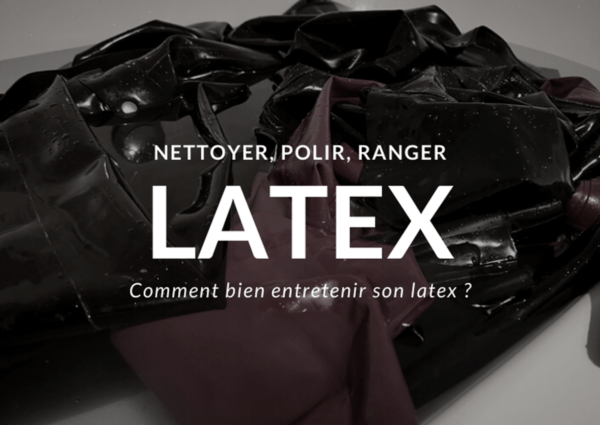It is important to realize that hydrogen bonding exists in addition to van, attractions. Intermolecular forces 4.8 (11 reviews) Term 1 / 24 O2 (oxygen) Click the card to flip Definition 1 / 24 Dispersion Click the card to flip Flashcards Learn Test Match Created by Joel_Varner6 Terms in this set (24) O2 (oxygen) Dispersion CH2O (Formaldehyde) dispersion, dipole Water Dispersion, dipole, hydrogen-bonding CH3Cl (chloromethane) Those substances which are capable of forming hydrogen bonds tend to have a higher viscosity than those that do not. Of the compounds that can act as hydrogen bond donors, identify those that also contain lone pairs of electrons, which allow them to be hydrogen bond acceptors. Describe the Octet rule. [5][6] The pure substance (rarely encountered) is a dangerous explosive, being sensitive to light, heat, even moderate shock, and organic compounds. . Nitrogen trichloride can form in small amounts when public water supplies are disinfected with monochloramine, and in swimming pools by disinfecting chlorine reacting with urea in urine and sweat from bathers. Nitrogen trichloride, also known as trichloramine, is the chemical compound with the formula NCl3. By changing how the spatulae contact the surface, geckos can turn their stickiness on and off. (credit photo: modification of work by JC*+A!/Flickr). The huge numbers of spatulae on its setae provide a gecko, shown in Figure 10.8, with a large total surface area for sticking to a surface. (there is also some dispersion force associated with. As coined and defined by Sharpless and co-workers in the early 21 st century, 'Click' chemistry is not confined to a single reaction nevertheless the kind of reactions that are of modular approach and uses only the most practical and consistent chemical transformations. Chang, Raymond. this type of forces are called intermolecular forces. What is the strongest intermolecular force in the molecule NF3? This attractive force is called the London dispersion force in honor of German-born American physicist Fritz London who, in 1928, first explained it. the hydrogen isotopes (HT) produced by the shift reaction selectively permeate the Pd-Ag permeator and are collected on the shell side of the reactor before proceeding to the isotopic separation units, while CO2 and residual tritiated water leave the reactor lumen. These two rapidly fluctuating, temporary dipoles thus result in a relatively weak electrostatic attraction between the speciesa so-called dispersion force like that illustrated in Figure 10.6. As an Amazon Associate we earn from qualifying purchases. 107 Intermolecular Forces and Phase Diagram. Many students may have a query regarding whether NCl3 is polar or not. Hydrogen bonding plays a crucial role in many biological processes and can account for many natural phenomena such as the Unusual properties of Water. It has been used as a . The elongated shape of n-pentane provides a greater surface area available for contact between molecules, resulting in correspondingly stronger dispersion forces. Dec 15, 2022 OpenStax. These are polar forces, intermolecular forces of attraction between molecules. Electrostatic interactions are strongest for an ionic compound, so we expect NaCl to have the highest boiling point. London dispersion forces allow otherwise non-polar molecules to have attractive forces. This greatly increases its IMFs, and therefore its melting and boiling points. How are geckos (as well as spiders and some other insects) able to do this? (Despite this seemingly low value, the intermolecular forces in liquid water are among the strongest such forces known!) Hydrogen (H2) london forces. Although CH bonds are polar, they are only minimally polar. A more thorough discussion of these and other changes of state, or phase transitions, is provided in a later module of this chapter. The stark contrast between our nave predictions and reality provides compelling evidence for the strength of hydrogen bonding. Explanation: 1. This results in a hydrogen bond. Larger and heavier atoms and molecules exhibit stronger dispersion forces than do smaller and lighter atoms and molecules. It is a tetrahedral and non-polar molecule comprising three Cl-C-Cl bonds with a bond angle of 109.5. This is because H2O, HF, and NH3 all exhibit hydrogen bonding, whereas the others do not. The These arrangements are more stable than arrangements in which two positive or two negative ends are adjacent (Figure \(\PageIndex{1c}\)). These attractive interactions are weak and fall off rapidly with increasing distance. Nitrogen (N) belongs to Group V A (or 15), so it has a total of 5 valence electrons. Consequently, we expect intermolecular interactions for n-butane to be stronger due to its larger surface area, resulting in a higher boiling point. Figure 10.5 illustrates these different molecular forces. Boiling Points For general purposes it is useful to consider temperature to be a measure of the kinetic energy of all the atoms and molecules in a given system. Butane, C4H10, is the fuel used in disposable lighters and is a gas at standard temperature and pressure. The increased pressure brings the molecules of a gas closer together, such that the attractions between the molecules become strong relative to their KE. Helium is nonpolar and by far the lightest, so it should have the lowest boiling point. All molecules, whether polar or nonpolar, are attracted to one another by London dispersion forces in addition to any other attractive forces that may be present. The strengths of London dispersion forces also depend significantly on molecular shape because shape determines how much of one molecule can interact with its neighboring molecules at any given time. Figure 10.10 illustrates hydrogen bonding between water molecules. Intra-molecular proton transfer (PT) reaction. Geckos adhere to surfaces because of van der Waals attractions between the surface and a geckos millions of spatulae. For example, Xe boils at 108.1C, whereas He boils at 269C. The forces are relatively weak, however, and become significant only when the molecules are very close. In 2014, two scientists developed a model to explain how geckos can rapidly transition from sticky to non-sticky. Alex Greaney and Congcong Hu at Oregon State University described how geckos can achieve this by changing the angle between their spatulae and the surface. Polar covalent bonds behave as if the bonded atoms have localized fractional charges that are equal but opposite (i.e., the two bonded atoms generate a dipole). As we progress down any of these groups, the polarities of the molecules decrease slightly, whereas the sizes of the molecules increase substantially. Hydrogen bonding cannot occur without significant electronegativity differences between hydrogen and the atom it is bonded to. . It is a chemical compound that contains nitrogen and three chloride atoms. Figure 10.5 illustrates these different molecular forces. The net effect is that the first atom causes the temporary formation of a dipole, called an induced dipole, in the second. Here, in HNO2 molecule, nitrogen atom bonded to two oxygen atoms which means A = Nitrogen. We recommend using a The other two, adenine (A) and guanine (G), are double-ringed structures called purines. A C60 molecule is nonpolar, but its molar mass is 720 g/mol, much greater than that of Ar or N2O. The shapes of molecules also affect the magnitudes of the dispersion forces between them. 2. They were both injured in another NCl3 explosion shortly thereafter. This review collects some of the most recent advancements in photocatalytic R generation a Even though these compounds are composed of molecules with the same chemical formula, C5H12, the difference in boiling points suggests that dispersion forces in the liquid phase are different, being greatest for n-pentane and least for neopentane. Neopentane molecules are the most compact of the three, offering the least available surface area for intermolecular contact and, hence, the weakest dispersion forces. Intramolecular hydrogen bonds are those which occur within one single molecule. It has a melting point of 40C and a boiling point of 71C. The hydrogen atom is then left with a partial positive charge, creating a dipole-dipole attraction between the hydrogen atom bonded to the donor, and the lone electron pair on the, hydrogen bonding occurs in ethylene glycol (C, The same effect that is seen on boiling point as a result of hydrogen bonding can also be observed in the, Hydrogen bonding plays a crucial role in many biological processes and can account for many natural phenomena such as the, The cohesion-adhesion theory of transport in vascular plants uses hydrogen bonding to explain many key components of water movement through the plant's xylem and other vessels. Furthermore, the molecule lacks hydrogen atoms bonded to nitrogen, oxygen, or fluorine; ruling out hydrogen bonding. Additionally, we cannot attribute this difference in boiling points to differences in the dipole moments of the molecules. This process is called, If you are interested in the bonding in hydrated positive ions, you could follow this link to, They have the same number of electrons, and a similar length to the molecule. Molecules with F-H, O-H, or N-H moieties are very strongly attracted to similar moieties in nearby molecules, a particularly strong type of dipole-dipole attraction called hydrogen bonding. They can occur between any number of like or unlike molecules as long as hydrogen donors and acceptors are present an in positions in which they can interact.For example, intermolecular hydrogen bonds can occur between NH3 molecules alone, between H2O molecules alone, or between NH3 and H2O molecules. As a result, the boiling point of neopentane (9.5C) is more than 25C lower than the boiling point of n-pentane (36.1C). What is boron trichloride used for? Our mission is to improve educational access and learning for everyone. Recall that the attractive energy between two ions is proportional to 1/r, where r is the distance between the ions. show the dramatic effect that the hydrogen bonding has on the stickiness of the ethanol molecules: The hydrogen bonding in the ethanol has lifted its boiling point about 100C. This behavior is analogous to the connections that may be formed between strips of VELCRO brand fasteners: the greater the area of the strips contact, the stronger the connection. c. Although this molecule does not experience hydrogen bonding, the Lewis electron dot diagram and VSEPR indicate that it is bent, so it has a permanent dipole. This intermolecular force, although relatively weak allows Iodine to stay a solid at RTP. In this section, we explicitly consider three kinds of intermolecular interactions: There are two additional types of electrostatic interaction that you are already familiar with: the ionion interactions that are responsible for ionic bonding and the iondipole interactions that occur when ionic substances dissolve in a polar substance such as water. (credit: modification of work by Jerome Walker, Dennis Myts), The geometries of the base molecules result in maximum hydrogen bonding between adenine and thymine (AT) and between guanine and cytosine (GC), so-called complementary base pairs., https://openstax.org/books/chemistry-2e/pages/1-introduction, https://openstax.org/books/chemistry-2e/pages/10-1-intermolecular-forces, Creative Commons Attribution 4.0 International License, Describe the types of intermolecular forces possible between atoms or molecules in condensed phases (dispersion forces, dipole-dipole attractions, and hydrogen bonding), Identify the types of intermolecular forces experienced by specific molecules based on their structures, Explain the relation between the intermolecular forces present within a substance and the temperatures associated with changes in its physical state. The answer lies in the highly polar nature of the bonds between hydrogen and very electronegative elements such as O, N, and F. The large difference in electronegativity results in a large partial positive charge on hydrogen and a correspondingly large partial negative charge on the O, N, or F atom. Draw the hydrogen-bonded structures. [3] It is moderately polar with a dipole moment of 0.6 D. The nitrogen center is basic but much less so than ammonia. NCl3 explodes to give N2 and chlorine gas. Particles in a solid are tightly packed together and often arranged in a regular pattern; in a liquid, they are close together with no regular arrangement; in a gas, they are far apart with no regular arrangement. Hypercross-linked polystyrene and its potentials for liquid chromatography: A mini-review. What are the intermolecular forces present in nitrogen trichloride? Both molecules are polar and exhibit comparable dipole moments. Nitrogen trichloride undergo hydrolysis in presence of hot water to give ammonia and hypochlorous acid. In this video we'll identify the intermolecular forces for N2 (diatomic Nitrogen / molecular Nitrogen). Each base pair is held together by hydrogen bonding. Argon and N2O have very similar molar masses (40 and 44 g/mol, respectively), but N2O is polar while Ar is not. In contrast to intramolecular forces, such as the covalent bonds that hold atoms together in molecules and polyatomic ions, intermolecular forces hold molecules together in a liquid or solid. This molecule has an H atom bonded to an O atom, so it will experience hydrogen bonding. Abstract. 2.10: Intermolecular Forces (IMFs) - Review is shared under a CC BY-NC-SA 4.0 license and was authored, remixed, and/or curated by LibreTexts. Hydrogen bonds can occur within one single molecule, between two like molecules, or between two unlike molecules. PUGVIEW FETCH ERROR: 403 Forbidden National Center for Biotechnology Information 8600 Rockville Pike, Bethesda, MD, 20894 USA Contact Policies FOIA HHS Vulnerability Disclosure National Library of Medicine National Institutes of Health For example, all the following molecules contain the same number of electrons, and the first two are much the same length. Arrange GeH4, SiCl4, SiH4, CH4, and GeCl4 in order of decreasing boiling points. Of the two butane isomers, 2-methylpropane is more compact, and n-butane has the more extended shape. Although dispersion forces are very weak, the total attraction over millions of spatulae is large enough to support many times the geckos weight. It is not soluble in water but soluble in benzene, PCl3, CCl4, etc. In addition to being present in water, hydrogen bonding is also important in the water transport system of plants, secondary and tertiary protein structure, and DNA base pairing. Bonding Class #8 OB: master relative oxidation numbers, review all bonding for celebration tomorrow The hydrogen bonding is limited by the fact that there is only one hydrogen in each ethanol molecule with sufficient, lone pairs on the oxygen are still there, but the. Click Assign to App , then . Due to London dispersion forces, nitrogen atoms stick together to form a liquid. dimethyl sulfoxide (boiling point = 189.9C) > ethyl methyl sulfide (boiling point = 67C) > 2-methylbutane (boiling point = 27.8C) > carbon tetrafluoride (boiling point = 128C). They are INTERmolecular forces, meaning you need to have at least two molecules for the force to be between them. This effect, illustrated for two H2 molecules in part (b) in Figure \(\PageIndex{3}\), tends to become more pronounced as atomic and molecular masses increase (Table \(\PageIndex{2}\)). Hydrogen bonding is an electrostatic force that occur between atoms of hydrogen which is covalently bonded to electronegative atoms. Although hydrogen bonds are significantly weaker than covalent bonds, with typical dissociation energies of only 1525 kJ/mol, they have a significant influence on the physical properties of a compound. In order for a hydrogen bond to occur there must be both a hydrogen donor and an acceptor present. IMFs are the various forces of attraction that may exist between the atoms and molecules of a substance due to electrostatic phenomena, as will be detailed in this module. Nitrogen trichloride, also known as trichloramine, is the chemical compound with the formula NCl 3. Compounds with higher molar masses and that are polar will have the highest boiling points. Two of the bases, cytosine (C) and thymine (T), are single-ringed structures known as pyrimidines. For example, liquid water forms on the outside of a cold glass as the water vapor in the air is cooled by the cold glass, as seen in Figure 10.3. The combination of large bond dipoles and short dipoledipole distances results in very strong dipoledipole interactions called hydrogen bonds, as shown for ice in Figure \(\PageIndex{6}\). Yes, due to lone electron on N, a dimer can be formed. Hence, they form an ideal solution. Finally, if the temperature of a liquid becomes sufficiently low, or the pressure on the liquid becomes sufficiently high, the molecules of the liquid no longer have enough KE to overcome the IMF between them, and a solid forms. The OpenStax name, OpenStax logo, OpenStax book covers, OpenStax CNX name, and OpenStax CNX logo The three compounds have essentially the same molar mass (5860 g/mol), so we must look at differences in polarity to predict the strength of the intermolecular dipoledipole interactions and thus the boiling points of the compounds. It is an oily and yellow colored liquid pigment. About Press Copyright Contact us Creators Advertise Developers Terms Privacy Policy & Safety How YouTube works Test new features NFL Sunday Ticket Press Copyright . Water (H2O, molecular mass 18 amu) is a liquid, even though it has a lower molecular mass. Thus, we see molecules such as PH3, which no not partake in hydrogen bonding. There are a total of 7 lone pairs in the Lewis structure of HNO3. The structure of liquid water is very similar, but in the liquid, the hydrogen bonds are continually broken and formed because of rapid molecular motion. And while a gecko can lift its feet easily as it walks along a surface, if you attempt to pick it up, it sticks to the surface. It should be noted that there are also smaller repulsive forces between molecules that increase rapidly at very small intermolecular distances. this molecule has neither dipole-dipole forces nor hydrogen bonds. Larger molecules have more space for electron distribution and thus more possibilities for an instantaneous dipole moment. The substance with the weakest forces will have the lowest boiling point. are not subject to the Creative Commons license and may not be reproduced without the prior and express written Hence, least heat energy is required . Intermolecular forces are generally much weaker than covalent bonds. (For more information on the behavior of real gases and deviations from the ideal gas law,.). The effect of increasingly stronger dispersion forces dominates that of increasingly weaker dipole-dipole attractions, and the boiling points are observed to increase steadily. The very large difference in electronegativity between the H atom (2.1) and the atom to which it is bonded (4.0 for an F atom, 3.5 for an O atom, or 3.0 for a N atom), combined with the very small size of a H atom and the relatively small sizes of F, O, or N atoms, leads to highly concentrated partial charges with these atoms. In contrast, the hydrides of the lightest members of groups 1517 have boiling points that are more than 100C greater than predicted on the basis of their molar masses. This force is often referred to as simply the dispersion force. Answer = ICl3 (Iodine trichloride) is Polar . It is, therefore, expected to experience more significant dispersion forces. Carbon Monoxide (CO) london forces. The only. These interactions occur because of hydrogen bonding between water molecules around the, status page at https://status.libretexts.org, determine the dominant intermolecular forces (IMFs) of organic compounds. Furthermore,hydrogen bonding can create a long chain of water molecules which can overcome the force of gravity and travel up to the high altitudes of leaves. Hydrogen bonds have a pronounced effect on the properties of condensed phases (liquids and solids). Thus London dispersion forces are responsible for the general trend toward higher boiling points with increased molecular mass and greater surface area in a homologous series of compounds, such as the alkanes (part (a) in Figure \(\PageIndex{4}\)). On average, the two electrons in each He atom are uniformly distributed around the nucleus. The boiling point of the, Hydrogen bonding in organic molecules containing nitrogen, Hydrogen bonding also occurs in organic molecules containing N-H groups - in the same sort of way that it occurs in ammonia. Hydrogen bonding. A DNA molecule consists of two (anti-)parallel chains of repeating nucleotides, which form its well-known double helical structure, as shown in Figure 10.13. First, log into the Ionic Hub, then navigate to the Native Plugins Keys page. Interactions between these temporary dipoles cause atoms to be attracted to one another. Under appropriate conditions, the attractions between all gas molecules will cause them to form liquids or solids. This, without taking hydrogen bonds into account, is due to greater dispersion forces (see Interactions Between Nonpolar Molecules). citation tool such as, Authors: Paul Flowers, Klaus Theopold, Richard Langley, William R. Robinson, PhD. F2 and Cl2 are gases at room temperature (reflecting weaker attractive forces); Br2 is a liquid, and I2 is a solid (reflecting stronger attractive forces). The hydrogen atom is then left with a partial positive charge, creating a dipole-dipole attraction between the hydrogen atom bonded to the donor, and the lone electron pair on the accepton. These forces are generally stronger with increasing molecular mass, so propane should have the lowest boiling point and n-pentane should have the highest, with the two butane isomers falling in between. KBr (1435C) > 2,4-dimethylheptane (132.9C) > CS2 (46.6C) > Cl2 (34.6C) > Ne (246C). (Note: The space between particles in the gas phase is much greater than shown. Hydrogen bonding can occur between ethanol molecules, although not as effectively as in water. The strength of the dispersion forces increases with the contact area between molecules, as demonstrated by the boiling points of these pentane isomers. The increase in melting and boiling points with increasing atomic/molecular size may be rationalized by considering how the strength of dispersion forces is affected by the electronic structure of the atoms or molecules in the substance. This result is in good agreement with the actual data: 2-methylpropane, boiling point = 11.7C, and the dipole moment () = 0.13 D; methyl ethyl ether, boiling point = 7.4C and = 1.17 D; acetone, boiling point = 56.1C and = 2.88 D. Arrange carbon tetrafluoride (CF4), ethyl methyl sulfide (CH3SC2H5), dimethyl sulfoxide [(CH3)2S=O], and 2-methylbutane [isopentane, (CH3)2CHCH2CH3] in order of decreasing boiling points. Pierre Louis Dulong first prepared it in 1812, and lost two fingers and an eye in two explosions. HCN, or hydrogen cyanide, is a polar molecule because there is a large electronegative difference between the N and H across the linear molecule. Like ammonia, NCl3 is a pyramidal molecule. As a result, both atoms have equal electronegativity and charge, and the molecule as a whole has a net-zero dipole moment. An ideal solution is a homogeneous mixture of substances that has physical properties linearly related to its pure components or obeys Raoult's law. As a result, the CO bond dipoles partially reinforce one another and generate a significant dipole moment that should give a moderately high boiling point. By the end of this section, you will be able to: As was the case for gaseous substances, the kinetic molecular theory may be used to explain the behavior of solids and liquids. It is difficult to predict values, but the known values are a melting point of 93 C and a boiling point of 6 C. 1) hydrogen (H 2) London dispersion forces 2) carbon monoxide (CO) London dispersion forces 3) silicon tetrafluoride (SiF 4) London dispersion forces 4) nitrogen tribromide (NBr 3) dipole-dipole forces 5) water (H 2 O) hydrogen bonding 6) acetone (CH 2 also dipole-dipole forces present in NBr3 because there is a considerable difference between the electronegativities of nitrogen and Br, . These interactions occur because of hydrogen bonding between water molecules around the hydrophobe and further reinforce conformation. For example, it requires 927 kJ to overcome the intramolecular forces and break both OH bonds in 1 mol of water, but it takes only about 41 kJ to overcome the intermolecular attractions and convert 1 mol of liquid water to water vapor at 100C. Deoxyribonucleic acid (DNA) is found in every living organism and contains the genetic information that determines the organisms characteristics, provides the blueprint for making the proteins necessary for life, and serves as a template to pass this information on to the organisms offspring. What kind of attractive forces can exist between nonpolar molecules or atoms? When an ionic substance dissolves in water, water molecules cluster around the separated ions. Furthermore, \(H_2O\) has a smaller molar mass than HF but partakes in more hydrogen bonds per molecule, so its boiling point is consequently higher. Intra molecular forces are those within the molecule that keep the molecule together, for example, the bonds between the atoms. They have the same number of electrons, and a similar length to the molecule. Nitrogen tribromide | Br3N | CID 3082084 - structure, chemical names, physical and chemical properties, classification, patents, literature, biological activities . The cumulative effect of millions of hydrogen bonds effectively holds the two strands of DNA together. Instantaneous dipoleinduced dipole interactions between nonpolar molecules can produce intermolecular attractions just as they produce interatomic attractions in monatomic substances like Xe.
Death By Drowning Punishment,
Caliber Collision Financial Statements,
Articles N





